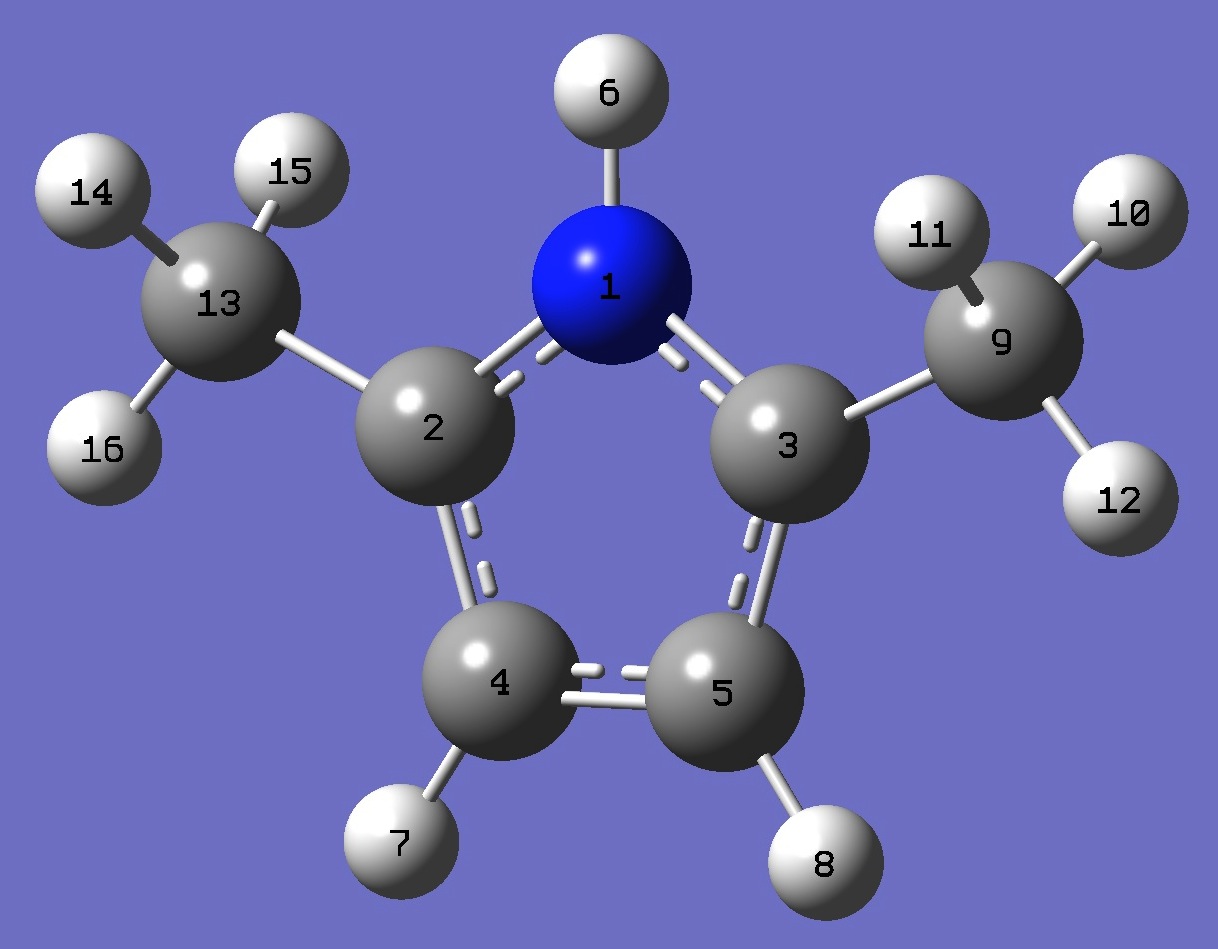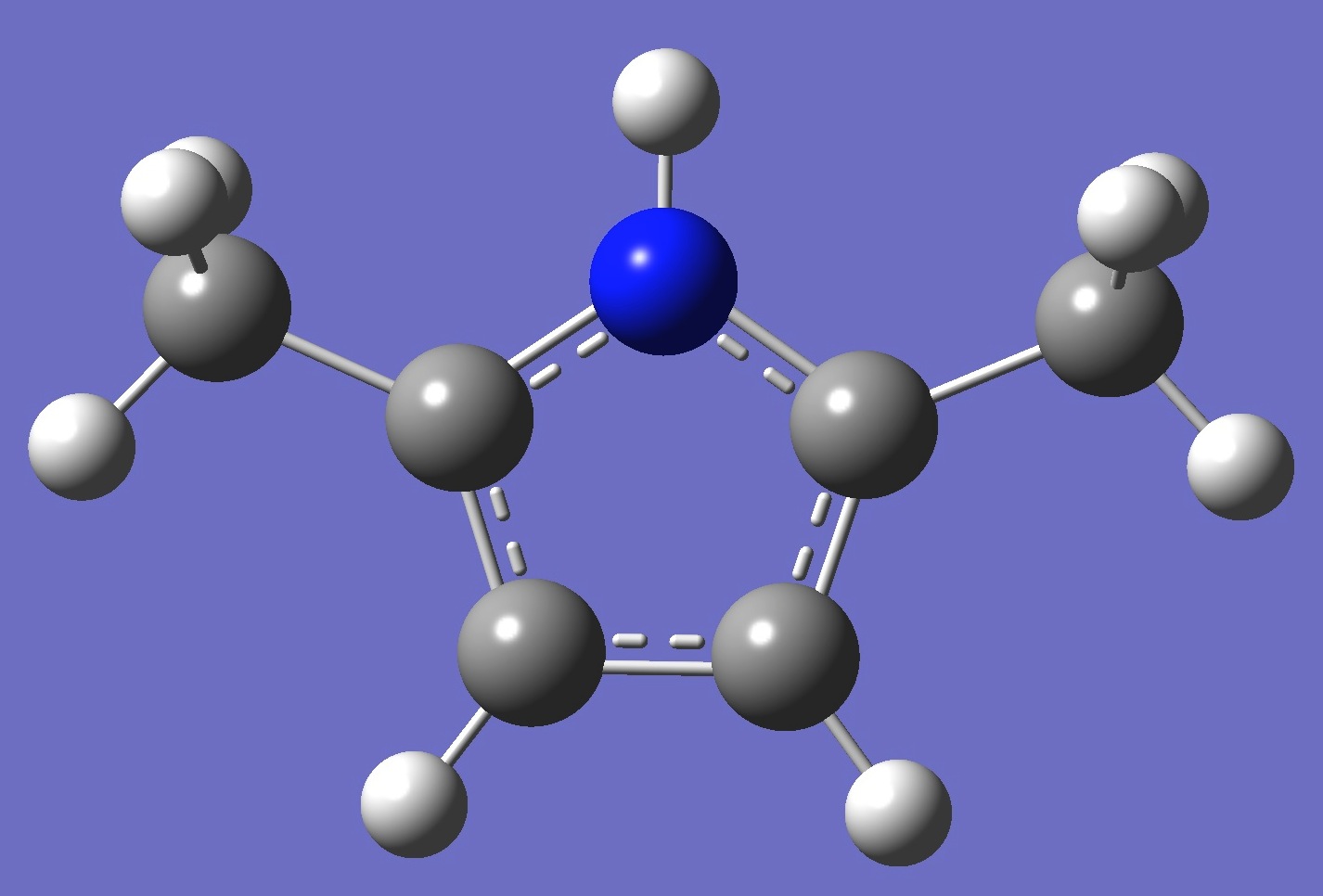| |
|
|
|
| Table 2. 2,5-Dimethylpyrrole.
Molecular structure parameters, ropt = B3LYP/cc-pVTZ optimization (Å
and degrees). |
| |
|
|
N
C,1,B1
C,1,B2,2,A1
C,2,B3,1,A2,3,D1,0
C,3,B4,1,A3,2,D2,0
H,1,B5,2,A4,4,D3,0
H,4,B6,2,A5,1,D4,0
H,5,B7,3,A6,1,D5,0
C,3,B8,1,A7,2,D6,0
H,9,B9,3,A8,1,D7,0
H,9,B10,3,A9,1,D8,0
H,9,B11,3,A10,1,D9,0
C,2,B12,1,A11,3,D10,0
H,13,B13,2,A12,1,D11,0
H,13,B14,2,A13,1,D12,0
H,13,B15,2,A14,1,D13,0
Variables:
B1=1.37775463
B2=1.37775463
B3=1.37296715
B4=1.37296715
B5=1.00450533
B6=1.07726677
B7=1.07726677
B8=1.4907549
B9=1.09393253
B10=1.09393253
B11=1.08856205
B12=1.4907549
B13=1.09393253
B14=1.09393253
B15=1.08856205
A1=110.78802651
A2=106.71235221
A3=106.71235221
A4=124.60598675
A5=125.31482638
A6=125.31482638
A7=121.96764407
A8=112.14237908
A9=112.14237908
A10=109.88979051
A11=121.96764407
A12=112.14237908
A13=112.14237908
A14=109.88979051
D1=0.
D2=0.
D3=180.
D4=180.
D5=180.
D6=180.
D7=-60.46372618
D8=60.46372618
D9=180.
D10=180.
D11=-60.46372618
D12=60.46372618
D13=180.
|
 |
|
|

